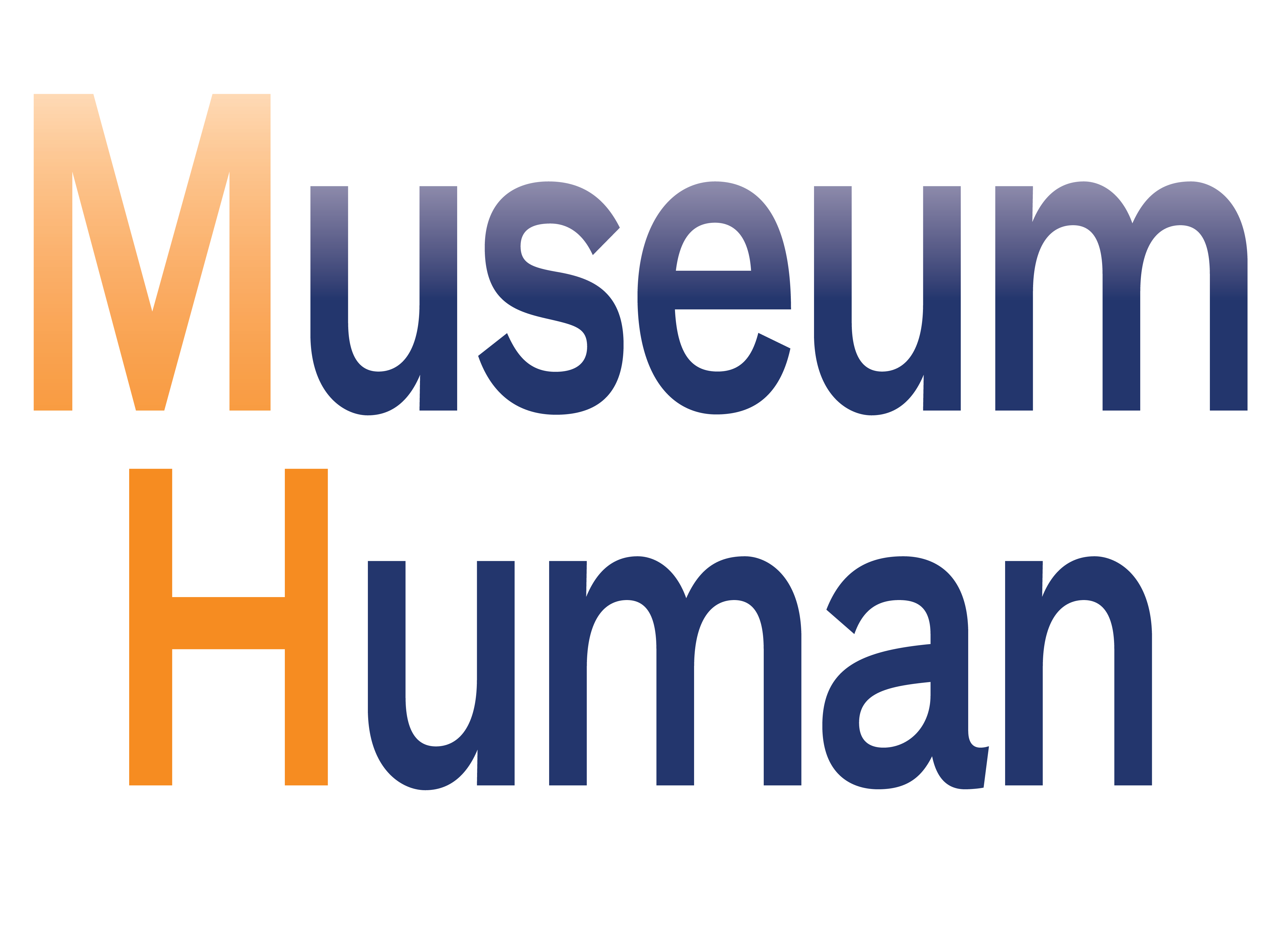
It's time to tackle hybrid work in museums. At least museums are skilled at quick problem solving, right?
If you're reading this and not a subscriber to Museum Human, consider scrolling to the bottom and signing up now—it's free and is the only way to read the site's longer weekly post on the organizational culture of cultural organizations.
In light of the this week's "May the Force Be With You" Star Wars Day on May 4, I'll leave you with this org culture bit from the one that started it all, episode 4, "A New Hope." Do we miss meetings like this?
So, hybrid workplaces should be an opportunity for museum organizations to prove that they're putting workers first. So far, meh … sure, many museums have physical campuses which need a certain amount of IRL to survive, but museums are not doing enough to work through this experiment together with staff, providing workers with agency and autonomy to solve the problem together. This will only become more difficult as governments push for museums, among other venues, to reopen, in a desperate drive for the appearance of normalcy.
Here's a ton of articles to this point.
I'll start with a recent New York Times piece on Google's various experiments in making physical offices more flexible (such as giant screens around the edges of meeting rooms for remote workers to be fully visible; portable air ducts for personalized ventilation, and robot-inflated temporary balloon walls), so that people can come back at least part of the time, while recognizing that few want to be there all the time.
Museum leaders may resist following an epically-cash-flush tech giant when it comes to managing a partial return to workplaces, but those of us in the field who are being asked for, or who wish to find, examples of institutions looking for solutions who know it will take a while to figure this out, need to read articles like this:
Many Google employees have gotten used to life without time-consuming commutes, and with more time for family and life outside of the office. The company appears to be realizing its employees may not be so willing to go back to the old life. …
“Work-life balance is not eating three meals a day at your office, going to the gym there, having all your errands done there,” … . “Ultimately, people want flexibility and autonomy and the more that Google takes that away, the harder it is going to be.”
Business Insider also wrote about Google here.
McKinsey had a couple of recent deep dives into the exhaustion workers feel, central when considering the difficulty that insitutions and workers will face in figuring out how to manage hybrid work.
This Medium article is addressed to leaders, but as is so often the case with business-oriented writing, the main point is true for almost anyone, whether about work or personal life: no one has experienced the pandemic in the same way. There's more and more advice about getting beyond the "how are you doing?" and "fine," to "How are you really?" But institutions will need more trust in the organization to have these deeper conversations, and the return to work issue is surfacing a lot of mutual mistrust in museum workplaces.
Even with the debate over IRL vs Zoom contact, this Medium piece reminds us of the slower and better quality of written communication, which can allow for better decision-making.
Org design firm NOBL has a helpful formula for what kind of work will have to be done in person.
Here's Harvard Business Review on how managers have to become more empathetic and understand their people better, especially as workplace processes become more automated in light of the pandemic.
The Economist magazine had a long article on "the rise of working from home": a little late, but still pertinent. I found this useful about how the pandemic has affected workers' opinions of their employers' values, expressed vs reality:
Too often claims that businesses are committed to transparency, integrity and communication are boilerplate platitudes. Studies find no correlation between the supposed core values of companies and employees’ assessment of how they reflect them. But change is afoot. In a report for the MIT Sloan Management Review, Don Sull of MIT and Charles Sull of CultureX, which advises firms, analysed workers’ ratings of the culture and values of their employers. There was a jump in approval when the pandemic broke out, with especially big increases in employees’ ratings for transparency and communication.
Employer demands for workers to return when some proportion of them aren't fully ready isn't something that can be sussed out easily in a simple yes/no or this-many-days-a-week line on a staff survey or permission form. It'll take longer conversations with many twists and turns along the way.
Psychological safety in a hybrid workplace will be a difficult ask. This HBR article goes deeper into all the varied individual situations which require a systemic improvement in empathy and understanding:
When it comes to psychological safety, managers have traditionally focused on enabling candor and dissent with respect to work content. The problem is, as the boundary between work and life becomes increasingly blurry, managers must make staffing, scheduling, and coordination decisions that take into account employees’ personal circumstances — a categorically different domain. …
For one employee, the decision of when to work from home may be driven by a need to spend time with a widowed parent or to help a child struggling at school. For another, it may be influenced by undisclosed health issues (something Covid brought into stark relief) or a non-work passion, as was the case with a young professional who trained as an Olympic-level athlete on the side. It’s worth noting that we’ve both heard from employees who feel marginalized, penalized, or excluded from this dialogue around work-life balance because they’re single or have no children, often being told they’re lucky they don’t have to deal with those challenges. Having psychologically safe discussions around work-life balance issues is challenging because these topics are more likely to touch on deep-seated aspects of employees’ identity, values, and choices. This makes them both more personal and riskier from legal and ethical standpoints with respect to bias.
More uncertainty and fuzziness. Are museums ready?
Another long HBR article, from the May/June 2021 issue, makes an interesting use of "personas" for employees in different situations, depending on the ability to focus at home, their commute, if they're established or new and still trying to set up a network at the office. They even mention a Swedish company that had "jams" to map (here's where I bring up mapping) conversations and information flows. HBR also discusses how leaders (but really, anyone) can manage through uncertain times.
This interview from McKinsey brings up how companies need to really trust and find out what their employees want and need. They have to take the time (and yes, money, people, resources) to understand the whole person. Our workplace cultures have already changed. I would add that in too many offices, leadership is returning to their old or unchanged way of deciding and expecting the office to snap back into place, transparency or democracy be damned.
A couple of downloadable reports from Microsoft and Prudential go deeper into the state of the American worker in increasingly hybrid times (and how these companies can help solve the problem on the enterprise level, hmm). The Microsoft report in particular makes some decent points ("Leaders are out of touch with employees and need a wake-up call"; "High productivity is masking an exhausted workforce"; "Gen Z is at risk and will need to be re-energized" [I would add, just Gen Z?]), but workers should keep in mind that this information is probably only possible because of the vast amount of data that the tech titan has vacuumed up through their enterprise software.
This piece from Forbes, reproduced on Medium, includes a lot of personal views, and some pointers, on managing remote work, with lessons for hybridity.
Here are some older articles about remote work, but I think they provide a useful time machine into what people and institutions were thinking in the distant past of 2020:
- Quartz had this article on the anxiety of returning.
- Check out this piece from Will Leitch, that exemplifies what I consider to the be the unhelpful attitude that "there's no such thing as zero riskso we have to try to get back to normal." It's not a reckless position in terms of sheer chance, but telling people that they're more likely to get hit by lightning than get covid during a commute or something like that is an unempathetic one, especially considering the large number of people, especially from marginalized and oppressed groups, for whom everyday life manifests risks to safety, physical and/or psychological. The pandemic has changed the risk equation and willingness that many of us face, as it should.
- Zapier, the producer of automation tools which connect other apps, had a useful article on tools for remote work.
- This article by Justina Barrett, Catherine Ricketts, Greg Stuart, and Alicia Valencia, in Mike Murawski's Art Museum Teaching blog, is about designer-in-residences at the Philadelphia Museum of Art. I wondered if the idea that museum can give visitors a place to process their feelings about various issues could be applied to staff. Could an institution have an x-in-residence to help staff? Could staff even take turns being the x-in-residence, say as part of a hybrid work arrangement? Could giving staff an opportunity to interact with the public, around a common goal of unpacking all our anxieties, some helped by museums some furthered by institutions, be a re-entry to in-person work?
- Finally, HBR had an article over a year ago about how employers should be careful with making personnel decisions during the pandemic downturn—I think it's useful advice even now. They wrote about the need for staff members, and not just HR, to help engage with the institutional culture:
I advise nominating one person to “own” the employee pulse during the next three to six months — employee engagement and well-being needs to be in one person’s hands. In larger companies, there should be someone for each business unit. Preferably that person should not be the CEO, for whom it will likely become just one more thing on the list that will get skipped. The company cannot afford for that to happen right now. And do not default to your head of HR. Look for someone that people feel can empathize with them and who has credibility.
There's no shortage of articles or even podcasts about this topic wherever you look. In fact, almost any article on workplaces or the next-stage of the pandemic has an aspect of dealing with hybridity. Expect to see elements of this in pretty much any Museum Human post!
"Enjoy" the links, as it were.
If you're reading this and not a subscriber to Museum Human, consider signing up for a free subscription below—it's the only way to read the site's longer weekly post on the organizational culture of cultural organizations. Thank you for reading!
cover image by Tamanna Rumee on Unsplash [description: a circle of paper clips on a blue background]

Links of the Week: May 6, 2021: Hybrid Theory by Robert J Weisberg is licensed under a Creative Commons Attribution-NonCommercial-ShareAlike 4.0 International License.






